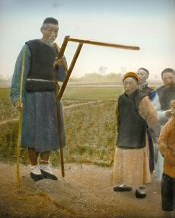
Geomancer at Work
Although he does not carry a compass, this man has the measuring tools associated with a man who kandi, "looks at the land." Westerners would say he is practicing fengshui, the system used in Asia to locate graves and building sites according to the qi or vital energy of the land.
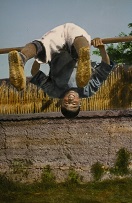
Missionaries emphasized physical exercise and sports and thought the mostly sedentary life of educated Chinese was one of the causes of the poor state of Chinese society.
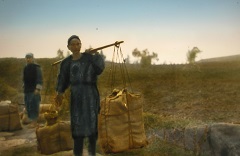
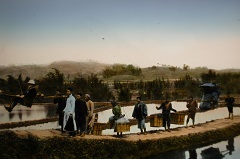
Travel by sedan chair was common in Sichuan where there were few wheeled vehicles. Here a foreigner with his dependents and luggage are being carried through a system of rice paddies. Most of the missionaries at WCUU travelled the 200 miles from Chongqing to Chengdu by sedan chair for security.
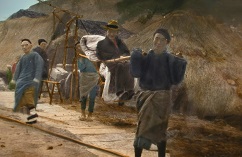
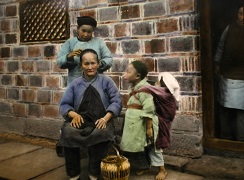
In Sichuan, they call local people 'Sichuanyi," and these photos provide a rare glimpse into the interplay work, beliefs and leisure (always an important concern for Chengdu people) that contributed to the still overwhelmingly rural social life.
"It is almost impossible to go into a Chinese street without seeing interesting things." GN, 3/2/19
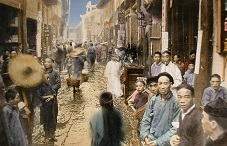
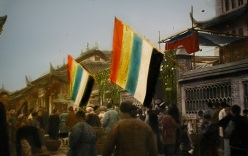
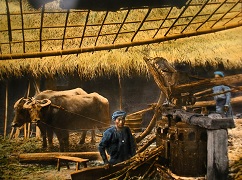
A man feeds cane into a sugar mill turned by a pair of oxen. Sugar was only one of the many cash crops grown in the rich soil and warm moist weather of Sichuan
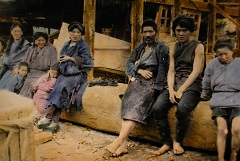
Heavy lumber like this from the western mountains was an important resource in Sichuan. The three women on the left are Tibetans from Ma'erkan based on the headdress of the closest of the women. This photograph was most likely taken in the Min River valley that leads into the mountains above Chengdu.
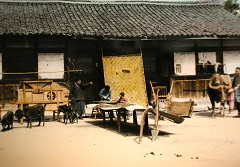
From his pigs, winnowing machine, mats to dry and sort the rice, a plow, a dou to collect the grain and of course a water buffalo, here is everything a well-equipped farm household needed. Along with a lot of sons.
The family probably lived in the buidling in the background
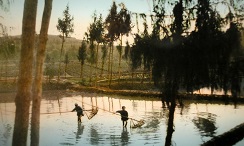
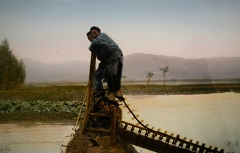
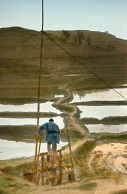
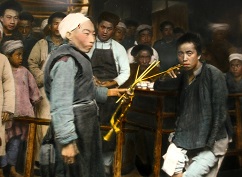
This one-armed man enjoys a pipe of tobacco while he sits on a narrow Sichuan style stool in a tobacco house similar to Sichuan's famous teahouses. A crowd has gathered to look at the photographer.
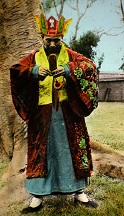
This man is a local priest. It seems most likely he is Daoist, but his robes are not decorated in symbols typical of Daoism and his headpiece is Buddhist. He epitomizes the syncretic spiritual beliefs of China.
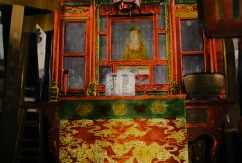
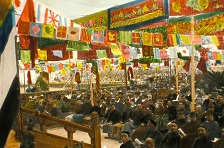
The meeting in this photo is most likely related to the movement to protest the Versailles treaty, a movement referred to as the May Fourth Movement and seen as the beginning of the progressive student movement in China. The Chinese fought with the Allies in WWI and welcomed its end. Shandong Province had been colonized by the Germans, and Chinese expected its return at the Versailles Peace Conference, but it was awarded instead to Japan raising patriotic feeling in China to a high pitch.
"We are watching the news which comes from the Peace Conference with a great deal of interest, especially in regards to the news which concerns the interests of Japan and China. I wish that China might get a square deal. Perhaps she will, but it will not be Japan's fault if she does." GN, 3/2/19
Note the mix of western and Chinese faces and dress. Also note the incorrect coloring of some of the flags (the American Flag is Red, Yellow and Green!)
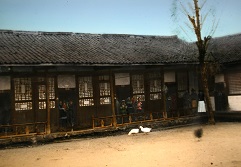
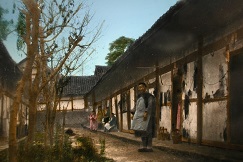
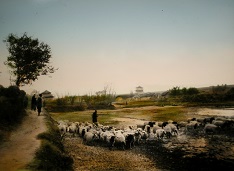
The Min River waters the Chengdu basin, and its upper reaches in the mountains are mostly non-Han ethnic. Han Chinese seldom raise sheep. This type of sheep is raised mostly by Qiang (/chang/) people. Families built houses with towers for protection and surveillance in these areas where bandits were common.